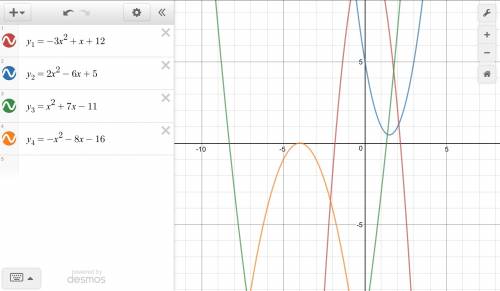When you have a bunch like this, I find it easiest to graph them.
The numbers of real solutions are ...
2
0
2
1
I know you know how to use Desmos to graph these. You can also write a little spreadsheet program to compute the discriminant b^2 -4ac, or do it the hard way.
1^2 -4(-3)(12) = 145 . . . positive, so 2 solutions
(-6)^2 -4(2)(5) = -4 . . .. negative, so 0 solutions
7^2 -4(1)(-11) = 93 . . . .. positive, so 2 solutions
(-8)^2 -4(-1)(-16) = 0 . .. zero, so 1 solution

